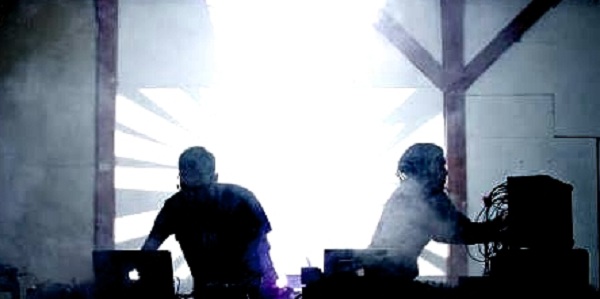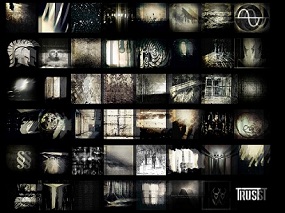Always Changing _ Interview with Orphx
To what do you attribute the rise of Industrial techno in modern times?
Rich: Techno has always drawn inspiration from industrial music, but this influence has faded in and out of prominence and popularity over the last thirty years. I think this latest wave of industrialized techno is primarily influenced by the popularity of Berghain and their taste for harder and darker techno, as well as the lasting influence of the Birmingham sound: Surgeon, Regis, Downwards and associated labels and artists. There’s also the rhythmic noise scene that we have worked in for many years, dating back to the early 1990s and revolving around labels like Ant Zen, Hands, Zhark and Ad Noiseam. This scene tends to be overlooked in journalistic accounts of the latest industrial techno wave but it is essentially a fusion of noise and industrial music with techno, electro, and drum and bass. Those who see “industrial techno” as a brand new development haven’t been listening very closely.
You’ve mentioned some really impressive labels there. I love discovering old and new music and seeing how some newer music has been influenced by the past. What do you think it is about dissonant sounds and loud music that draw some people over others?
Rich: The physicality of the sound – the way you can feel it in your body. I think dissonant, dark or aggressive music is also a way of working through those kind of emotions, transforming them or letting them go in a cathartic way.
Yes, definitely. Do you have any specific album/albums that you would always return to at certain times that work for you personally in a cathartic nature?
Rich: My Bloody Valentine – Loveless; The Velvet Underground & Nico; SPK – Leichenschrei; Steve Reich – Music for 18 Musicians; Pan Sonic – Kesto
Christie: Mika Vainio – Metri; Arvo Part – Fratres ; Sylvian and Sakamoto – Bamboo Houses
What was the last track that gave you goosebumps / chills?
Rich: “Isn’t It a Pity” by Nina Simone.
Christie: “Aurora” by Alva Noto and Ryuichi Sakamoto.
I find the whole concept of synaesthesia fascinating, I have heard some people describe seeing colours when listening to certain tracks… does this happen to you and can you speak further about the relationship between visual art and music?
Christie: I make both music and visual art, so this is something I’m really interested in. I think the fusion of visual art and music can be really powerful and this is something I’ve experimented with in my own work. When we first started performing as Orphx and Antiform, we tried to create immersive audio-visual environments using multiple 16mm projectors, slide projectors and transparent screens alongside the music, often surrounding the audience. When we started performing further from home this equipment became too difficult to transport so we turned to making videos that would be projected during the shows. But in the last few years we’ve stopped making visuals for the shows ourselves, both because we like the idea of having the music speak for itself and because we want to take more time to develop our video work to a level that we are happy with. But visual art is still really important to us and we try to create or help create art work that fits well with the music and the ideas behind each release.
Rich: We have recently collaborated with our friend Paul Prudence, an excellent video artist based in London. We’ll be performing with him again in London on May 3rd.
The fusion of visual art and music can be very powerful indeed. If you could chose to soundtrack any film (one already made or one that could potentially be made), what would it be?
Rich: Anything by Werner Herzog, David Lynch, Alejandro Jodorowsky or Gaspar Noe.
Christie: Or Andrei Tarkovsky.


